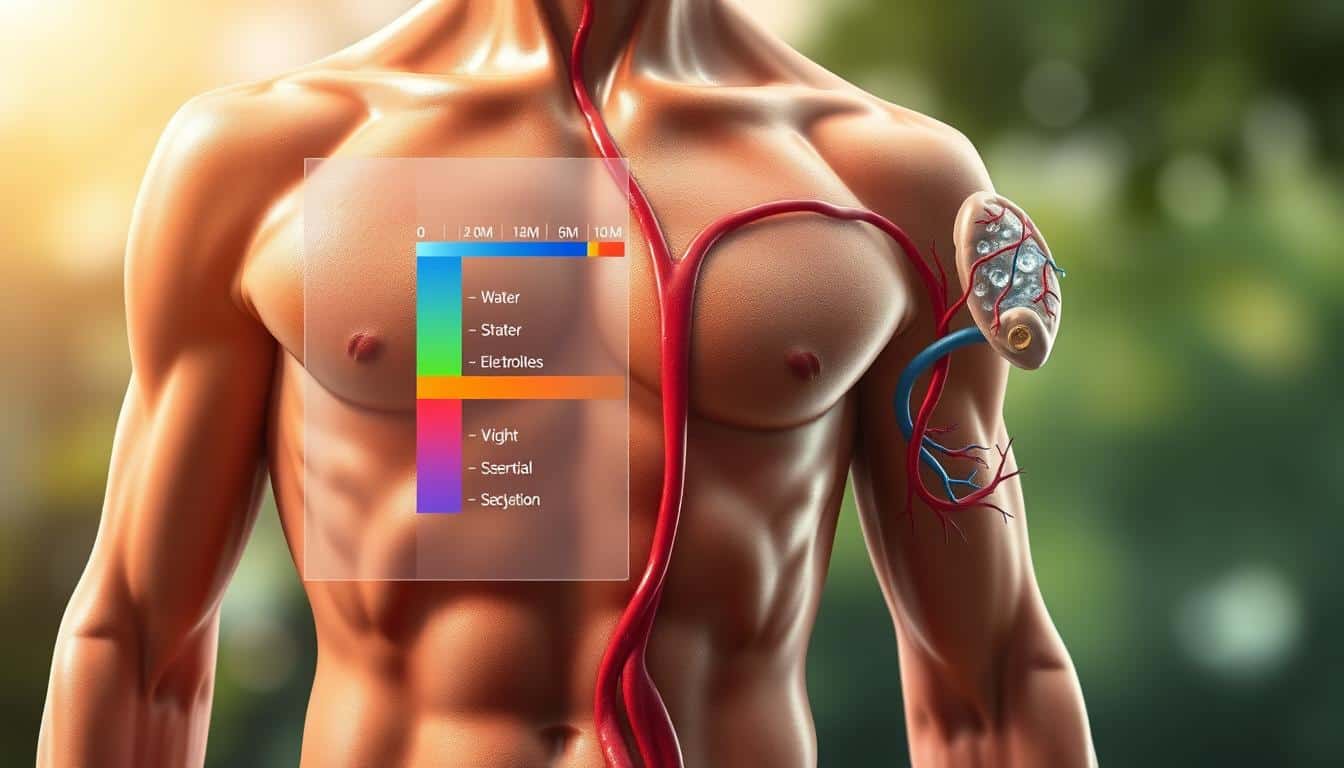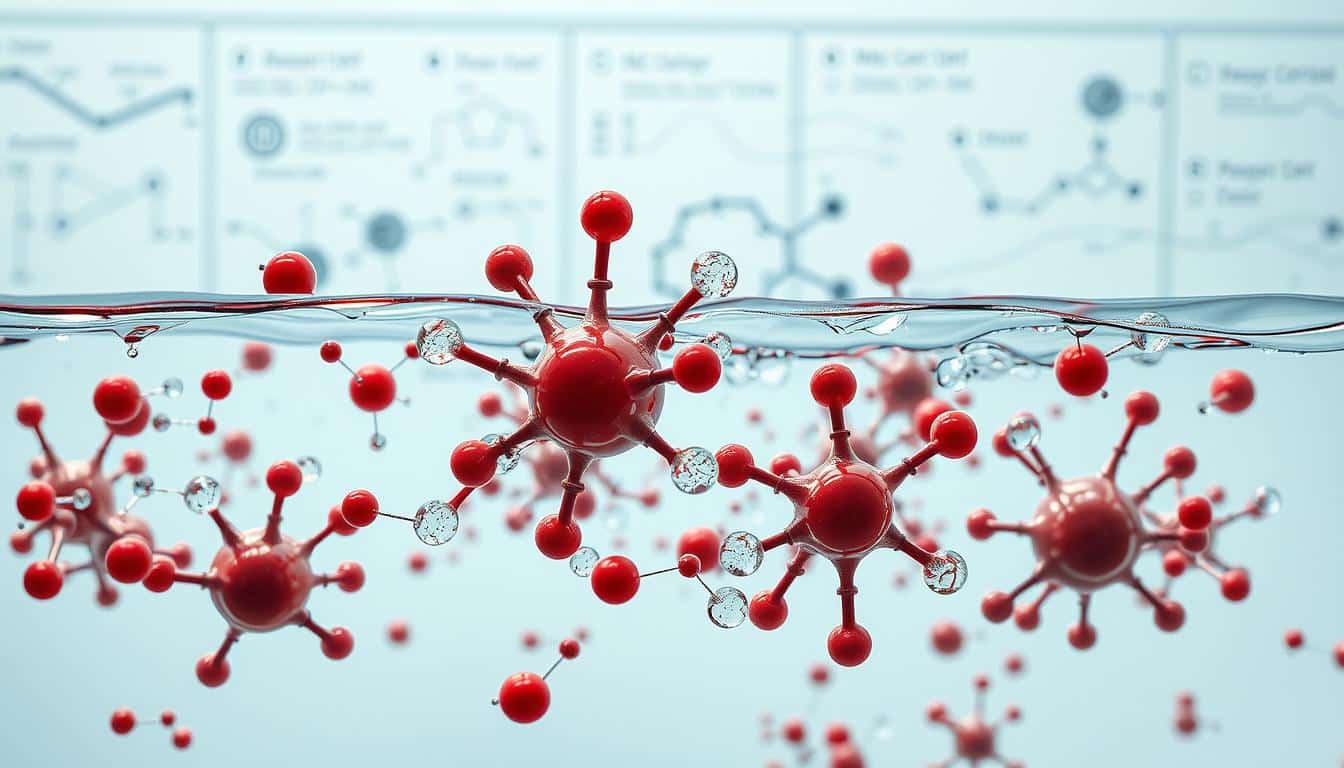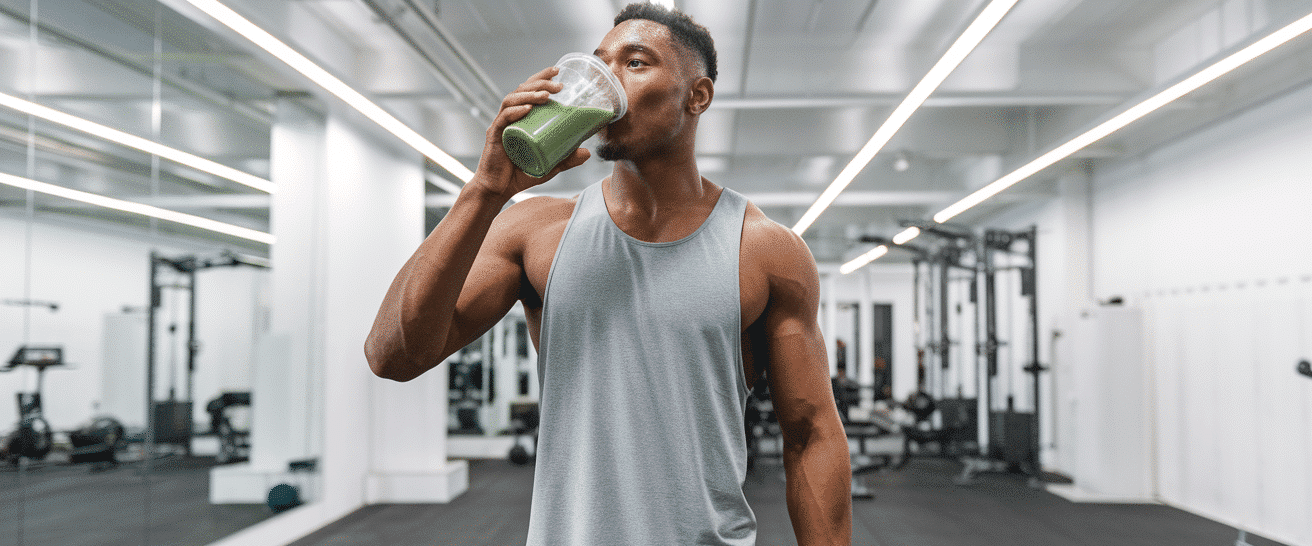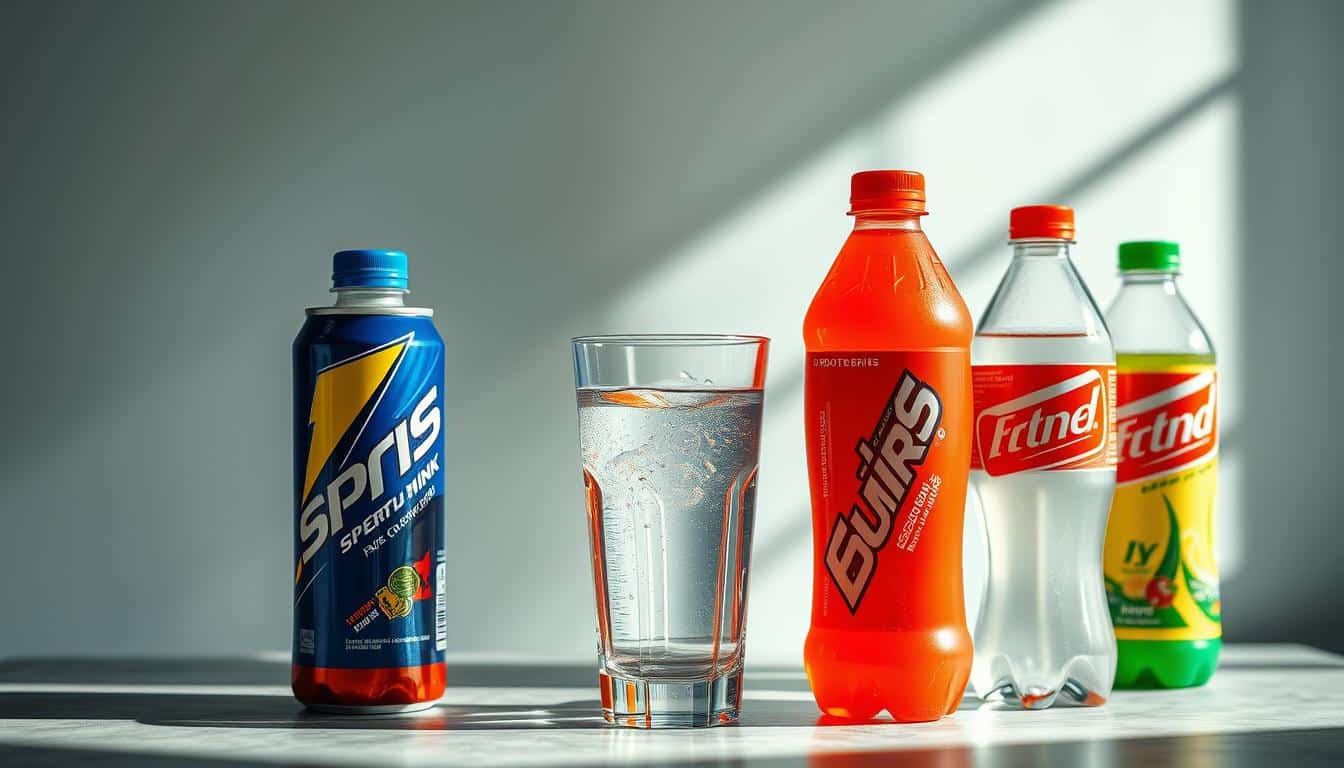I’ll never forget my first 5K race. The finish line had a table piled high with neon-colored bottles, and I grabbed one instinctively. It tasted like victory—sweet, energizing, and oddly scientific. But later, I wondered: Did my body actually need that brightly labeled drink, or would plain H2O have worked just as well?
Back in 1965, researchers created the first electrolyte-enhanced beverage for college athletes pushing their limits. These formulas weren’t meant for casual sipping—they addressed specific needs during intense physical exertion. Yet today, you’ll see them everywhere from office break rooms to playground sidelines.
Why did these specialized beverages become mainstream staples? Clever marketing plays a role, suggesting they’re essential for any activity level. But here’s what matters: Your body’s needs depend entirely on what you’re doing. A yoga session doesn’t demand the same fuel as a triathlon.
Over the next few minutes, we’ll explore how to match your hydration choices to your actual lifestyle. You’ll learn when those flashy drinks make sense—and when they’re just expensive sugar water. Let’s cut through the hype and find what truly keeps you feeling your best.
Understanding Hydration Choices
Your hydration needs shift like the hands of a clock – predictable yet constantly adjusting to life’s rhythms. Let’s break down what your body truly requires during routine days versus sweat sessions.

Hydration Needs in Daily Life
Most adults need about 8-12 ounces of fluid hourly when temperatures rise. But hydration starts before you feel thirsty. Drink 12-16 ounces two hours before yard work or summer walks to prep your system.
Clear or pale yellow urine means you’re on track. Darker shades? Your cells are waving red flags. Keep a reusable bottle handy – sip don’t gulp – for steady minerals balance.
Role of Water in Exercise
For workouts under 60 minutes, plain H2O outperforms specialized beverages. It:
- Maintains focus during spin classes
- Regulates body temperature on hikes
- Supports muscle function during weight training
Intense physical activity drains resources. While water handles short bursts, longer sessions (90+ minutes) might need extra support – but we’ll explore that later. For now, remember: your energy levels stay highest when hydration matches effort.
Exploring the sports drinks vs water myth
Picture this: You finish a sweaty workout and reach for a brightly colored bottle, convinced it’ll recharge you faster. But what if that choice leaves you thirstier than before? Let’s unpack what research reveals about common hydration claims.

Common Beliefs and Misconceptions
Many assume flavored options hydrate better than plain fluids. While electrolytes help replace lost minerals, most brands pack 20-34 grams of sweeteners per serving. That’s like dissolving 6 sugar cubes in your water bottle.
Another myth? These products always prevent cramps. A study on hydration myths found 7 in 10 participants still experienced muscle issues despite consuming electrolyte formulas before intense exercise.
Scientific Evidence on Hydration
Research shows simple H2O absorbs faster than hypertonic solutions (those with high sugar/salt content). Your gut prioritizes fluid balance – too much sodium or glucose slows this process. For activities under 90 minutes, water typically meets needs better.
| Factor | Water | Flavored Options |
|---|---|---|
| Sugar per 16oz | 0g | 21-34g |
| Sodium Content | 0-5mg | 100-200mg |
| Hydration Speed | Fast | Moderate |
| Best For | Daily use | Extreme conditions |
Key takeaway? Save specialized formulas for multi-hour efforts or extreme heat. Your weekday gym session? A reusable bottle filled with filtered water works wonders.
Evaluating Nutritional Components
Let’s crack open the nutritional facts behind those vibrant labels. What you’re drinking contains more than just flashy colors – it’s a calculated mix of components designed for specific scenarios.
Electrolytes and Minerals
These formulas pack sodium (35-200mg per 8oz) to help retain fluids. Potassium (15-90mg) supports nerve function, while magnesium aids muscle recovery. But here’s the catch: one 20oz bottle often delivers 330mg sodium – more than a medium fries from your favorite burger joint.
Carbohydrates, Sugars, and Sodium Levels
The sweet taste comes at a cost. Many contain 19-34g sugar per serving – that’s 6-10 teaspoons! For perspective:
| Component | Per 16oz | Daily Limit* |
|---|---|---|
| Sugar | 34g | 25-36g |
| Sodium | 440mg | 2300mg |
| Potassium | 90mg | 4700mg |
*Based on average adult needs
These numbers explain why best hydration options for athletes focus on balanced formulas. While electrolytes help during marathons, most casual users get more sugar than benefits.
Your body needs different support for a 30-minute walk versus a 3-hour bike ride. Next time you grab a bottle, check if the minerals and carbohydrates match your actual activity level.
When and Why to Choose Sports Drinks
Imagine training for a marathon and hitting mile 18 as temperatures soar. Your legs feel heavy, and water alone isn’t cutting it. This is where strategic hydration makes all the difference. Let’s explore scenarios where these specialized beverages earn their place in your routine.
Appropriate Use During Extended Workouts
Save electrolyte beverages for sessions lasting 60+ minutes or high-intensity efforts. They shine when:
- You’re cycling through hills for 90 minutes
- Doing back-to-back tennis matches in midday heat
- Training for a triathlon with multiple activity phases
Aim for 16-24 ounces per hour during these efforts. The 30-60g carbs in most formulas help maintain energy levels when glycogen stores deplete.
Rehydration and Recovery Strategies
After sweating heavily for hours, your body needs more than H2O. Consume 8-16 ounces post-workout if:
- Your shirt shows salt stains
- You exercised in 85°F+ weather
- Your session included multiple high-intensity intervals
Pair with a protein-rich snack to optimize recovery. Weekend warriors: stick to water unless meeting these thresholds. Your body knows the difference between mowing the lawn and running stadium stairs!
Debunking Health Risks and Myths
Many grab brightly colored bottles without realizing what’s at stake. Let’s shine a light on real concerns – and separate fact from marketing fiction.
Potential Dangers of Overconsumption
One 20-ounce bottle packs 34g sugar – nearly 70% of a soda’s sweetness. Acidic formulas (pH 3-4) erode tooth enamel faster than orange juice. Over time, this combo raises health risks:
- 500+ extra calories weekly = 7+ pounds yearly weight gain
- 34% higher type 2 diabetes risk with daily consumption
- Tooth decay rates matching regular soda drinkers
Clarifying Misunderstood Claims
Parents often confuse these with diet options. Truth? Most contain more sugar than a glazed doughnut. The American Academy of Pediatrics states: children in casual play need water, not electrolyte formulas.
| Sugar (20oz) | Acidity (pH) | Dental Impact | |
|---|---|---|---|
| Cola | 65g | 2.5 | High erosion |
| Sports Formula | 34g | 3.3 | Moderate erosion |
| Water | 0g | 7.0 | None |
Energy drinks pose separate risks – their caffeine content can spike heart rates in kids. Your best move? Treat flavored options like occasional tools, not daily thirst-quenchers.
Conclusion
Hydration isn’t about flashy labels—it’s about listening to your body’s signals. For 90% of daily activities and workouts under an hour, plain water keeps you refreshed without added sugars or calories. Your system absorbs it fastest, maintaining energy better than sugary alternatives.
Save specialized formulas for true endurance challenges: think 90-minute soccer matches or outdoor labor in summer heat. These moments demand electrolyte replacement you can’t get from H2O alone. Even then, check labels—many products contain more sweeteners than necessary.
Kids and casual exercisers rarely need anything beyond regular fluids. A reusable bottle with filtered water prevents dehydration during school games or weekend hikes. For intense training days, mix your own recovery drink using coconut water and a pinch of salt.
Your best strategy? Start with water. Upgrade only when sweat stains your clothes or workouts cross the hour mark. Smart choices keep your body thriving—both today and long-term.


